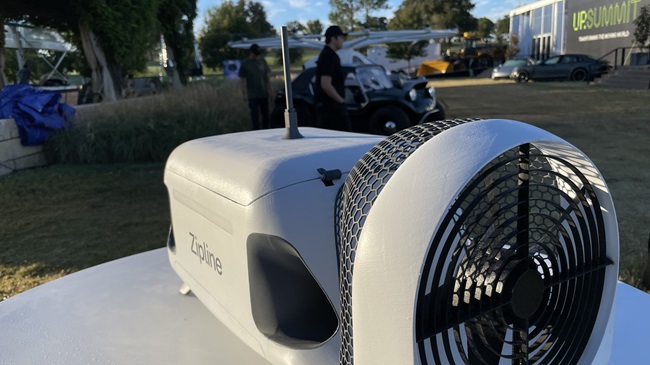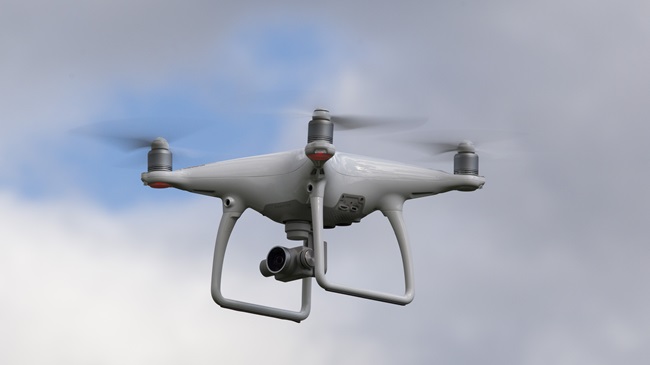Discover what you can do with what you've got
Unmanned aircraft technology has advanced at warp speed, but think hard before you give in to the impulse to buy the latest, greatest thing.
Do you really need a new drone?
I’ll bet the answer is no.
Before you give in to temptation to upgrade, make sure you're actually getting all you can out of what you have. Sure, you may be able to benefit from a better camera if you are flying a really old drone, but an example that I love to keep in mind is the work from Stewart and Alina Carroll at Drone Film Guide. This husband-and-wife team demonstrates how to get professional, production-worthy photography using their DJI Phantom 3 and Mavic Air.
Knowing how to use your equipment is the key. You probably have a drone capable of doing lots more than you can imagine, so take the time to learn all its capabilities and again, practice, practice, and then practice some more.
The more things change, the more they stay the same
Those who have worked in technology for a long time have seen product arcs as pioneering tech evolves. Remember when the first iPhone came out? I sure do: June 29, 2007. Looking back, those early iPhones with the smaller screen and limited capabilities seem pretty clunky, but take a closer look. The basics are still the same as the new models we have today. Sure, the size has changed and the inside tech has advanced, but the big screen and overall form factor are pretty much the same. Why? Because it just works!
Now, compare this to the early drones, such as the Parrot AR 1.0, which was announced way back in 2010. Its capabilities may have been a far cry from what we fly today, but notice the similarities? It is still a four-rotor layout with a centered hull, and powered by lithium-based batteries. The quadcopter design is darn near perfect for this type of drone. (Let's set aside the niche market for higher-end or specialized drones with six or eight rotors, and focus on what most of us are flying, and that is quads.) The DJI Phantom, Mavic, Autel Evo, and Parrot Anafi are among many brands and models that use this proven fundamental quad design successfully.
It’s what’s inside that matters
So, how do we improve a proven design? Most of the advances in the past few years have nothing to do with motor placement and everything to do with what's inside the hull. This applies to both circuits and software. We are seeing more powerful processors with number-crunching capacities that far exceed what we had even relatively recently.
Having great hardware housing powerful multicore processors that manage flight controls and obstacle avoidance, process high-resolution video, and process GPS satellite signals requires some awesome software. Without the code, you have a paperweight.
The flight control software has improved a great deal in the past few years. DJI Go and DJI Go 4 and Autel Explorer are some nice examples. Both offer you tools to control your flight, record photos and video, and keep flight logs. They even have a number of prebuilt flight modes such as orbit, follow mode, and other nifty automations.
Keep in mind that you can perform most of these automated flight tasks manually if you have the practiced skills. This is yet another reason that it is a good idea to get out there and fly as much as you can to hone your skills.
A note on third-party software:Litchi is a popular choice with DJI owners hoping to augment the system's factory capabilities—you can even link up the Airmap app with your DJI app and fly right from within the Airmap app. After working in the tech industry for two decades, I tend to stick with the software that comes out of the same factory as the hardware. I like knowing that all the pieces of the puzzle were designed purposefully and are a seamless fit rather than something added on later by a different source all together.
What’s worth buying?
Building on the power of advanced on-board processing, one company has certainly grabbed my attention: Skydio isn’t quite as well known as some of the larger names but they have some amazing stuff going on. The Skydio R1 was released in 2018, and the next generation, while in sort of "top secret" mode right now, is promised to be released later in 2019.
The Skydio R1 was reviewed by CNET and it was nothing short of amazing. The R1 uses cameras all around to build and understand its location relative to its surroundings, and with advanced predictive computing programming, can follow moving objects and avoid obstacles while keeping the camera focused on the subject. There is really nothing else like it in this segment.
Artificial intelligence and automated data processing are the future, and the drone pilot's job description is likely to shift a bit. Stick skills may be less important as autonomous flight becomes more common, and drones become more capable of handling flight-critical tasks on their own. The benefit to most any use case is obvious. Search and rescue, mapping, industrial inspection, movie location scouting, and videography will all benefit from rapidly advancing software.
Now is a great time to get a feel for that possible future, maybe get your hands on something a little less expensive and a little more autonomous. Get ready, because it's coming.




